Welcome to our forum. A Message To Our New and Prospective Members . Check out our Forum Rules. Lets keep this forum an enjoyable place to visit.
Currently working on errors from the latest (SimplePress) forum update. Many issues have been resoled and others are being worked on. Thank you for your patience.
 Topic RSS
Topic RSS



 (0 votes)
(0 votes) Regulars
 Offline
Offline

I am looking at a variety of simple machines used in the basement bamboo rod making group, and came up with something that would really make quick work of wrapping silver wire on a violin bow. The great thing about it is that the bow (which has a camber) remains in a fixed position. It is called a JW Rod Wrapper. It looks like the wrap advancement uses a bicycle threaded headset.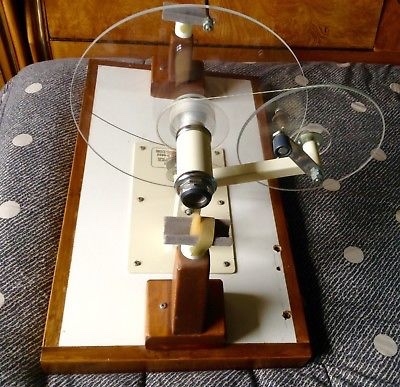
Success is the progressive realisation of a worthy ideal. —Earl Nightingale.
Regulars
 Offline
Offline
Irv
funny you should post this
this is my machine for wrapping windings on fishing rods. I will try this some day . It uses a sewing machine motor (which has variable speed foot control)
it uses a rubber lined chuck to hold the rod. I was going to use silk and nylon winding when I wanted to keep the weight down for balance. I have a ton of windings including metallics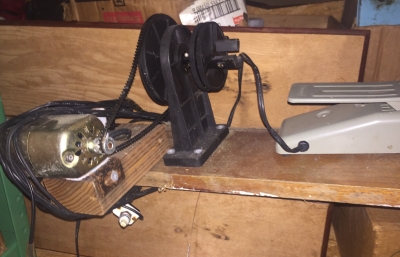

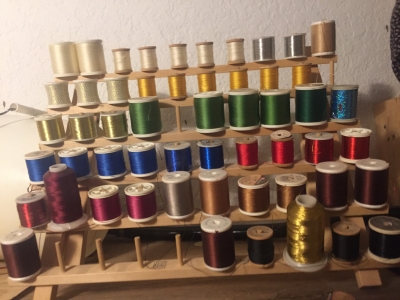

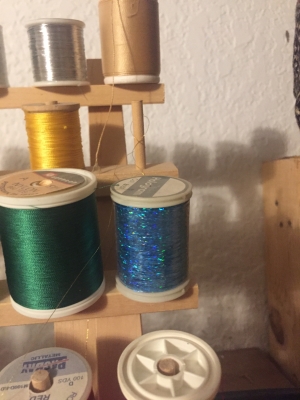

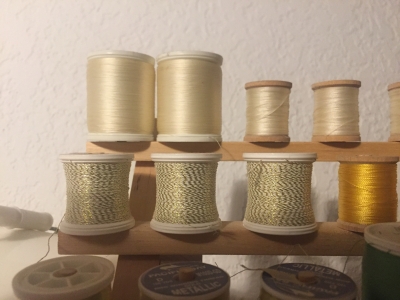
 .
.
i have way to many hobbies
Regulars
 Offline
Offline
Regulars
 Offline
Offline

Hi steveduf. I wrongly assumed that the winding was advanced by the bicycle headstock thread. The string exits the machine through a thin piece of rod with an end hoop. Rod tension keeps the thread on course.
There is a technique in bamboo rod repair of using white silk thread to cover a splice, which becomes transparent once varnish is applied. The same thread can be used to lend the appearance that the guides are suspended without any support.
I did find a bamboo rod maker named Divine that made octagonal sections, but the industry did not follow his example.
I found gold and silver plated copper wire at a very attractive price on eBay, and I think that rose gold plated wire would look even better if I can find it.
I see how your winder can be successful on a rod, which is cylindrical in shape, but it would be difficult on a violin bow. Although people do it with a hand operated drill.
Success is the progressive realisation of a worthy ideal. —Earl Nightingale.
Regulars
 Offline
Offline

Regulars
 Offline
Offline

I worked out that the handle is operated by the bearing races and shaft of a bicycle pedal. I had to purchase a set of 9/16” 20 thread per inch taps since no one that I could find makes a right (and left) handed nut with this pitch. I determined that the pedal shaft housing need to be 3/4” schedule 80 to get the necessary O.D. and I.D. The main shaft needs to be 1-1/4” schedule 80.
Ordering the stuff I need to make a couple (hopefully I will be able to sell one to make up the cost for the pair).
Fiddlerman, once completed I am willing to send you a sample so you could compare the work of the machine to that of your luthiers. What gauge wire do you like to work with (I assume about 26 gauge). I did find a source of rose gold (over silver) plated wire. Should be a looker.
Success is the progressive realisation of a worthy ideal. —Earl Nightingale.
Regulars







Regulars
 Offline
Offline

Hi damfino. The pictured machine operates like steveduf’s. In both, the string remains stationary and the bow rotates (and wobbles). In the one I pictured, the bow remains stationary and the string (or wire) rotates around it. Since the bow has camber, I think the latter method has considerable merit.
Success is the progressive realisation of a worthy ideal. —Earl Nightingale.
Regulars







I didn't post the picture to imply one way has more merit than the other, since I've never done it, but just to show an example of what someone who's been making bows and violins for over 60 years put together for his work. 🙂
☆•*¨*•¸¸¸.•*¨*•☆•*¨*•¸¸¸.•*¨*•☆•*¨*•.¸¸¸.•*¨*•☆
World's Okayest Fiddler
☆•*¨*•.¸¸¸.•*¨* •☆•*¨*¨*•¸¸¸.•*¨*•☆
Regulars
 Offline
Offline

The joy on his face is evidence of his feeling of a successful design, and the size of the spool of wire attests to his experience. I can make use of any and all photos, since it is fun to look at the myriad of solutions expended on a common problem. I am sure that I can glean something from them all.
Success is the progressive realisation of a worthy ideal. —Earl Nightingale.
1 Guest(s)


 Log In
Log In Register
Register




















